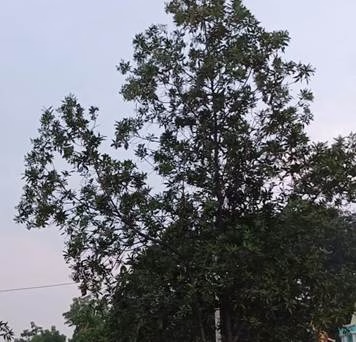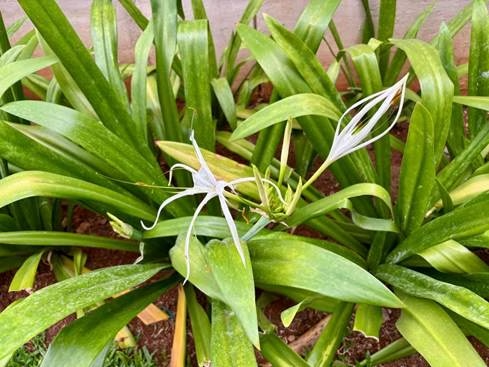Beggars were dragged away and detained to ensure they were not seen in the mainland areas of Cyberabad-Hyderabad during Bill Clinton’s visit to Hyderabad 2000. A major cleanliness drive was ordered by the then state government, led by Chief Minister Chandrababu Naidu for hosting the team of the American President. In preparation for Clinton’s visit, city authorities issued strict instructions: no stray animals, beggars, or rough sleepers were to be visible anywhere. Acting swiftly, the traffic police began rounding up beggars from across Hyderabad—more than 2,000 people. Roadside vendors and rough sleepers were temporarily evacuated, and small shops were dismantled.
Unfortunately, the idea of urban beautification in India is driven by a capitalist lens, one that equates cleanliness with erasure and order with silence. Market spaces, roadside vendors, and stray dogs and cats add beauty to urban life. The strays around human habitats symbolize the everyday celebration of life. Urban afforestation and beautification in Hyderabad, as in many other cities, are often carried out without consulting local knowledge, considering the sustainability of flora and fauna, or even scientific rationale.
Rethinking Hyderabad’s Urban Aesthetics
Hyderabad is regarded as one of the most livable cities in India. In 2015, it was even named one of the must-visit cities by National Geographic Travel. The city’s beauty is organic, unfolding through its ancient Persian architecture, the rich aroma of its cuisine—a unique blend of Mughlai, Persian, and Turkish influences—and the enduring local Sufi traditions. The sacred Dargahs and vibrant Jataras, honoring female deities like Bathukamma, are a major part of its cultural fabric. During Bathukamma, women with platters decorated with seasonal flowers, particularly Tangedu flowers (matura tea tree), combine elaborate floral arrangements to honor the goddess. Festivals like Bonalu and the lively celebration of Bathukamma with these blooms further contribute to the city’s unique cultural tapestry.
Hyderabad is one of the rare cities in India, blessed with vast reservoirs like Hussain Sagar, Himayat Sagar, and the Osman Sagar projects. Its true beauty, however, lies in its ancient architecture—iconic landmarks such as the Charminar, the grand Chowmohalla Palace, the regal Falaknuma Palace, the Qutb Shahi tombs, and the Yellamma Temple atop Golconda Fort, where the first Bonam is offered each year during Bonalu. What sets Hyderabad apart from many other cities in India is its abundance of green zones, home to a rich variety of local flora and fauna. The Tangedu trees (Tanner’s Cassia or Mature Tea Tree), used predominantly during the Bathukamma festival, bloom beautifully across the city. Wild peacocks and various species of snakes roam freely in the green zones, agricultural fields, and institutional campuses like the NAARM (National Academy of Agricultural Research Management), ICAR (Indian Council of Agricultural Research) institutes such as the Grape Research Institute, Rice Research Institute, Millet Research Institute, WALAMTARI (Water and Land Management Training and Research Institute), NIN (National Institute of Nutrition), NIRD (National Institute of Rural Development), CCMB (Centre for Cellular and Molecular Biology), UoH (University of Hyderabad), and Osmania University. In order to save biodiversity, institutes like Dr. B.R Ambedkar Open University and UoH have even protested the government’s decisions in various contexts.
Yet, despite this natural and architectural splendor, Hyderabad often undergoes re-beautification efforts that fail to recognize or honor the local beauty and the cultural ideals of what constitutes true urban aesthetics. Instead of preserving the city’s vibrant essence, these efforts frequently overlook the delicate balance between modern urbanization and the unique nature of the city’s heritage.
Lopsided Urban Beautification
As part of urban afforestation programs and efforts to beautify city spaces, Hyderabad has seen the widespread planting of Conocarpus trees. These trees, however, are environmentally hazardous. Known for their high water consumption, Conocarpus trees deplete the soil’s moisture, water table, and nutrients, making it difficult for other plants to thrive. Additionally, they are invasive species in India, as they were imported and are not native to the region. It’s believed that its pollen is bad for the lungs. Lacking natural predators, many imported species spread uncontrollably and disrupt local ecosystems, much like the earlier introduction of eucalyptus trees in urban forestry projects that depleted groundwater. Hyderabad city still has pockets of farmland in various areas. These plants are hazardous to those farmers. Every ecosystem has some poisonous plants, but we don’t usually replant thousands of them—like oleanders—for beautification. What makes urban afforestation problematic is the large-scale planting of poisonous, non-native, or ecologically harmful species, which end up invading and dominating entire landscapes. Some parks where children play have also seen the planting of spider lilies (poison bulb) for aesthetic purposes. While Conocarpus is environmentally harmful, spider lilies present a different danger, as they are highly toxic to dogs and cats. If a child touches or accidentally ingests any part of the plant, it can lead to severe poisoning, which could be fatal if it enters the bloodstream or is consumed in significant amounts. Though it was not an imported plant, planting it in the garden is lifethreatening to humans, pets, and stray animals.

Conocarpus depletes the water table

Spider Lily/Poison Bulb (Crinum asiaticum)
Moreover, the idea of beauty has evolved to the point where flowers native to the local flora are no longer considered beautiful. Marigold, jasmine or mogra, sannajaji (winter jasmine), virajaji (bellflower), parijata (night-flowering jasmine), shanku pushpa (Asian pigeonwings), mandaram (Hibiscus), sampangi (wealthy flower), and kankambaralu (tropical flame or firecracker flower) are now dismissed by the modern urban concept of beauty. In fact, the parijata flower, which is said to have been stolen from heaven by Lord Krishna for his wife, and flowers like shanku pushpa mentioned as aparajita in Ayurveda find no place in the urban beautification of Hyderabad. In the era when a few urban communities are strongly upholding Sanatan Dharma, they often overlook the large-scale invasion of flora and fauna. There is a growing tendency to erase everything local and embrace a globalized idea of urban beautification driven by the capitalist market by importing plants, trees, and animals. Ironically, even these “Sanatanis” prefer Western dog breeds as pets over local Indian strays.
Everything that is local is increasingly detested in favour of imported plants and trees. Spider lilies, also known as poison bulb (Crinum asiaticum) and poisonous shrubs like oleanders now define the beauty of urban spaces. Oleanders, which were banned by the state of Kerala after the tragic death of a woman in 2024 due to poisoning from the oleander leaves, are ironically planted all along the Outer Ring Roads (ORRs) of Hyderabad.
“Continuous as the stars that shine,
And twinkle on the milky way”
—William Wordsworth described the daffodils that were native to his land in his famous poem, Daffodils celebrating nature and the spring season. But the Tangedu trees, with their striking yellow blossoms around the city of Hyderabad, are now overshadowed by the tall and widespread Conocarpus trees. In her powerful short story “Braveheart Badeyya,” from Father May Be an Elephant and Mother Only a Small Basket, But…, well-known Telangana writer Gogu Shyamala highlights the significance of the Tangedu tree in the lives of the Madigas. Its trunk and bark are particularly important for soaking and tanning leather in the traditional process of making slippers. The native Neem tree (vepa chettu), about which Vandana Shiva has written extensively regarding its medicinal and ecological importance; the Peepal tree, under which the Buddha is believed to have meditated; and the tamarind tree, every part of which is beneficial to human life, are now disappearing from the urban landscape of Hyderabad. Often, the government justifies the cutting down of these old, native, and well-grown trees by planting a few Conocarpus—an invasive species—as a token gesture of reforestation.
History of Invasive Species
The import of flora and fauna has a long and dark history in India. Back in the 1950s, the country was in the midst of a desperate struggle to feed its people. A deadly combination of droughts, floods and crop diseases had pushed India into a food crisis. Prime Minister Jawaharlal Nehru turned to the United States of America for help. After long negotiations, the US finally sent 2 million tons of wheat. But the shipment carried more than just grain—it also brought along the invasive Parthenium weed, which is now widely referred to as Congress grass. This aggressive plant spreads rapidly, choking fields and triggering allergic reactions and respiratory issues, becoming a silent menace that continues to haunt India’s landscape. States like Jammu and Kashmir, Himachal Pradesh, Uttarakhand, Sikkim, Arunachal Pradesh, Assam, Meghalaya, Nagaland, Manipur, Mizoram, Tripura, Odisha, Andhra Pradesh, Karnataka, and Tamil Nadu face the brunt of parthenium invasion even today.
Hyacinth, a floating aquatic plant, is unfortunately also an obnoxious weed that has been suffocating freshwater bodies such as rivers, rivulets, streams, ponds, dams, lakes, rendering them unsuitable for commercial fisheries, transportation, and recreational use. It blocks sunlight and depletes oxygen levels in the water, making it unfit for aquatic life and human use. This is not an indigenous species of India. It was allegedly introduced to India during British colonial rule as an ornamental aquatic plant from South America for ornamental purposes. The plant produces beautiful purple flowers with high aesthetic value. Yet, one person’s idea of beauty can become another’s hazard—because the ecological evolution of a geographical region supports only its native flora and fauna, fostering natural predators, resisting invasive species, and maintaining environmental balance.
Some instances of importing invasive species are driven by the pursuit of beautification, while others occur purely by accident. However, the current approach to urban beautification reflects a troubling act of neglect—it often excludes consultation with key stakeholders and fails to consider insights from diverse disciplinary backgrounds. Trees like Conocarpus and Eucalyptus deplete groundwater resources, exacerbating water scarcity in already drought-prone cities. Artificially spreading spider lilies and oleanders on such a large scale may be unnecessary. In an era that values interdisciplinary and transdisciplinary collaboration, fields such as urban studies, botany, biology, culture and heritage studies are functioning in silos, ultimately failing the city as a whole.
Dr. Sowjanya Tamalapakula is an associate professor at Woxsen University.












































